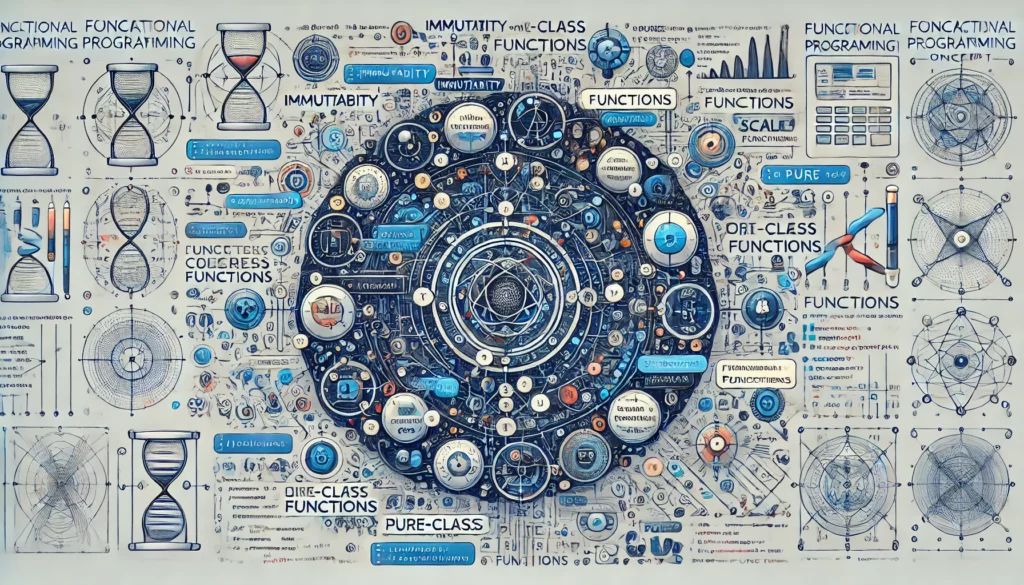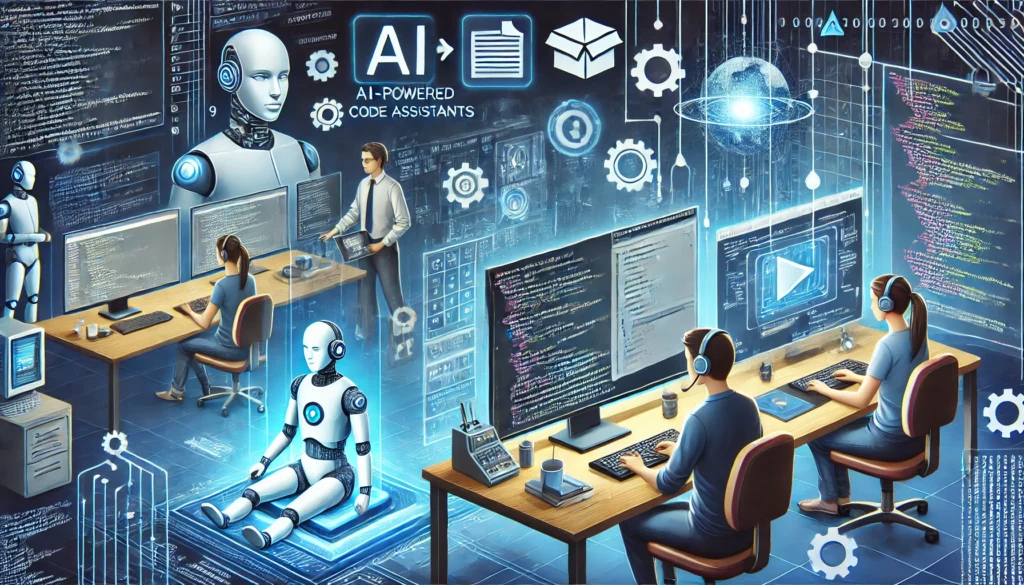Introduction
Programming languages have evolved significantly since the inception of software development. From early languages like Fortran and COBOL to modern powerhouses like Python and JavaScript, the landscape has been in constant flux. Innovations in programming languages play a crucial role in driving efficiency, enhancing functionality, and addressing new technological challenges. As the digital world continues to expand, staying abreast of these innovations is essential for developers and organizations aiming to stay competitive.
1. The Rise of Modern Programming Languages
The past decade has seen the emergence of several new programming languages designed to address the limitations of older languages and cater to the needs of modern software development. Languages like Rust, Kotlin, and Swift have gained traction due to their unique features and benefits. Rust, for instance, is celebrated for its memory safety and concurrency capabilities, making it ideal for system-level programming (McKinsey & Company). Kotlin, endorsed by Google as a preferred language for Android development, offers a concise syntax and enhanced interoperability with Java (CarSwitch). Swift, developed by Apple, provides a powerful and intuitive platform for iOS and macOS applications, emphasizing safety and performance (ar5iv).
Established languages are also undergoing significant enhancements to stay relevant. Python, for example, continues to dominate in areas like data science and machine learning due to its extensive libraries and ease of use. JavaScript, the backbone of web development, evolves continuously with updates that enhance its performance and capabilities. C# has also seen notable improvements, with features that support modern development practices and improve developer productivity (ar5iv) (Martin Solomon).
2. Functional Programming Gains Traction
Functional programming, once considered a niche paradigm, is now gaining widespread recognition for its advantages in writing concise, predictable, and testable code. Functional programming emphasizes immutability, first-class functions, and pure functions, which can lead to more maintainable and less error-prone code. Languages like Haskell, Scala, and F# are at the forefront of this movement (ar5iv) (Martin Solomon).

Even mainstream languages are adopting functional programming features. JavaScript has incorporated functions like map, reduce, and filter, enabling developers to apply functional principles. Python also supports functional programming paradigms, allowing developers to write cleaner and more efficient code. The growing adoption of functional programming is driven by its ability to handle complex problems more effectively, particularly in areas like data analysis and concurrent programming (ar5iv).
3. Improvements in Performance and Safety
As software becomes more complex and resource-intensive, performance and safety are paramount concerns. Innovations in programming languages are addressing these issues through better memory management, concurrency models, and type systems. Rust is a prime example, with its strict borrowing and ownership model that eliminates many common causes of bugs, such as null pointer dereferencing and data races (McKinsey & Company). This focus on safety without sacrificing performance makes Rust a preferred choice for systems programming and embedded systems.
Concurrency and parallelism are also critical areas where modern languages are making strides. Go, developed by Google, simplifies concurrent programming with its goroutines and channels, allowing developers to write highly concurrent applications without the complexity of traditional threading models (Martin Solomon). Erlang, though not new, continues to be relevant due to its robust concurrency support, making it ideal for applications that require high availability and fault tolerance (Martin Solomon).
4. Increased Focus on Developer Productivity
Developer productivity is a crucial factor in software development, and modern programming languages are designed to make developers more efficient. Simpler syntax, readability, and powerful development tools contribute significantly to this goal. Python is renowned for its clear and readable syntax, which reduces the learning curve and accelerates development (CarSwitch) (ar5iv). Kotlin’s expressive syntax and null safety features also enhance productivity by reducing boilerplate code and common errors (CarSwitch).
The development ecosystem around these languages plays a significant role in boosting productivity. Robust integrated development environments (IDEs), comprehensive libraries, and powerful frameworks enable developers to build and deploy applications more quickly and efficiently. Languages like Python and JavaScript benefit from vast ecosystems that provide tools for virtually every development need, from web frameworks like Django and React to machine learning libraries like TensorFlow and PyTorch (Martin Solomon).
5. Domain-Specific Languages (DSLs)
Domain-specific languages (DSLs) are designed to address specific problem domains, offering tailored syntax and features that simplify development in those areas. DSLs like HTML and CSS for web development, SQL for database queries, and R for statistical computing are well-established examples. These languages allow developers to express solutions more concisely and naturally within their respective domains (McKinsey & Company).
Emerging DSLs are continuing this trend, focusing on niche areas that benefit from specialized syntax and capabilities. For example, GraphQL has gained popularity for API development, providing a more flexible and efficient way to query data compared to traditional REST APIs. Similarly, languages like VHDL and Verilog are essential in hardware design and verification, offering constructs specifically suited for those tasks (Martin Solomon).
6. Future Trends in Programming Languages
The future of programming languages is being shaped by several exciting trends. One significant trend is the integration of AI and machine learning capabilities directly into programming languages. Languages like Python and R are at the forefront of this movement, with extensive libraries and frameworks that simplify the development of AI and ML applications (CarSwitch). Additionally, languages such as Julia are gaining traction for their performance in numerical and scientific computing.

Cross-platform development is another critical area of innovation. Frameworks like Flutter and React Native allow developers to write code once and deploy it across multiple platforms, significantly reducing development time and effort (ar5iv). These frameworks leverage modern programming languages like Dart (for Flutter) and JavaScript (for React Native) to enable seamless cross-platform capabilities.
6. Future Trends in Programming Languages (continued)
Quantum computing is an emerging field with its own set of programming languages designed to harness the unique capabilities of quantum processors. Languages like Q# (developed by Microsoft) and Quipper are specifically created for quantum computing, offering constructs that enable developers to write quantum algorithms. These languages are essential as we move towards a future where quantum computing could solve complex problems beyond the reach of classical computers (Martin Solomon).
Another significant trend is the increasing use of AI and machine learning to enhance the capabilities of programming languages themselves. AI-powered code assistants like GitHub Copilot are revolutionizing the way developers write code by providing intelligent code suggestions, auto-completions, and even generating entire code snippets based on natural language descriptions (ar5iv). These tools leverage machine learning models trained on vast codebases to understand and predict the developer’s intent, thus speeding up the coding process and reducing the likelihood of errors.
The emphasis on cross-platform development continues to grow, driven by the need for seamless user experiences across different devices and operating systems. Frameworks like Flutter and React Native are at the forefront, allowing developers to write code once and deploy it across multiple platforms. Flutter, which uses the Dart programming language, and React Native, which leverages JavaScript, are designed to maximize code reuse and minimize platform-specific adjustments, making cross-platform development more efficient and accessible (ar5iv).
Additionally, there is a growing interest in languages and frameworks that support the development of decentralized applications (dApps) and blockchain technology. Solidity, for instance, is a language designed for writing smart contracts on the Ethereum blockchain. As blockchain technology continues to evolve and find applications in various industries, the demand for languages that can support secure, transparent, and efficient dApp development is likely to increase (Martin Solomon).
Conclusion
Programming languages are the backbone of software development, and their continuous evolution is crucial for addressing the ever-changing needs of the tech industry. Innovations in modern languages like Rust, Kotlin, and Swift, the resurgence of functional programming, improvements in performance and safety, and the focus on developer productivity are shaping the current landscape of software development. Domain-specific languages continue to simplify specialized tasks, while future trends such as AI integration, cross-platform development, and quantum computing promise to further revolutionize the field.
As we look ahead, it’s clear that the future of software development will be driven by these programming language innovations. Developers and organizations that stay informed and adapt to these changes will be better positioned to leverage new technologies and maintain a competitive edge in the rapidly evolving digital world. Embracing these trends will not only enhance the efficiency and effectiveness of software development processes but also pave the way for groundbreaking applications and solutions that could transform industries and improve lives.
By understanding and adopting these trends, developers can ensure they are prepared for the future of software development, leveraging the latest tools and techniques to create innovative and impactful solutions. The ongoing evolution of programming languages is a testament to the dynamic nature of the tech industry, and those who stay ahead of the curve will undoubtedly lead the way in the next generation of software development.
FAQs about Programming Language Innovations
Q1: What are the benefits of modern programming languages like Rust, Kotlin, and Swift?
Modern programming languages such as Rust, Kotlin, and Swift offer several benefits tailored to contemporary software development needs. Rust is known for its focus on safety and performance, particularly in systems programming, where it prevents common bugs like null pointer dereferencing and data races through its strict ownership model (McKinsey & Company). Kotlin enhances productivity with its concise syntax and seamless interoperability with Java, making it a popular choice for Android development (CarSwitch). Swift, developed by Apple, emphasizes safety, performance, and modern syntax, making it ideal for iOS and macOS application development (ar5iv).
Q2: How is functional programming changing the landscape of software development?
Functional programming is gaining traction due to its ability to produce more predictable and maintainable code. This paradigm emphasizes immutability, first-class functions, and pure functions, which reduce side effects and make code easier to test and debug. Languages like Haskell, Scala, and F# are leading this movement, while mainstream languages like JavaScript and Python are incorporating functional programming features to enhance their capabilities (ar5iv) (Martin Solomon).
Q3: What advancements in programming languages are improving performance and safety?
Recent advancements in programming languages focus on enhancing performance and safety through better memory management, concurrency models, and type systems. Rust’s ownership model prevents many common programming errors, ensuring memory safety without sacrificing performance (McKinsey & Company). Languages like Go and Erlang offer robust concurrency support, simplifying the development of highly concurrent applications and improving overall system efficiency (Martin Solomon).
Q4: What are domain-specific languages (DSLs), and why are they important?
Domain-specific languages (DSLs) are specialized languages designed to address specific problem domains effectively. Examples include HTML and CSS for web development, SQL for database queries, and R for statistical computing. DSLs provide tailored syntax and features that simplify development tasks within their respective domains, making them crucial for increasing productivity and reducing complexity in specialized areas (McKinsey & Company) (Martin Solomon).
